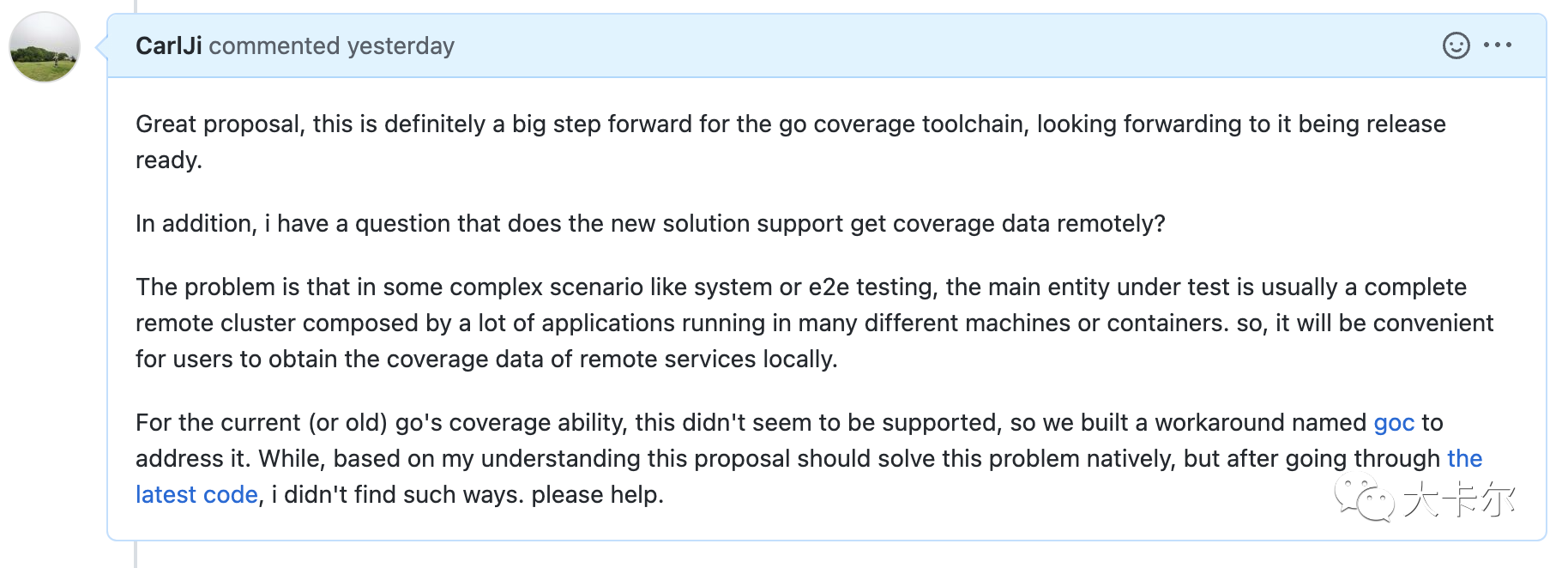首先, 应该明确一个观点: SRE 本质上也是软件工程师, 应该习惯于通过软件工程师的思维来解决问题。这个观点,我认为可以是 SRE 领域的第一性原理。
对于不接触代码, 不愿意深入到代码实现细节的工作方式, 我认为在当前这个阶段是不行的。
线上的很多问题,本质上是业务问题,单靠运维手段是做不好稳定性保障的。而如果能从业务角度出发,从根源上解决问题,那稳定性天然就会得到保障。
所以从这个角度, SRE 花时间花精力去学习业务,理解实现,修复代码,可能反而是性价比更高的一种方式。
当然, SRE 本身就很忙,需要解决各种线上问题,可能并没有太多时间去深入理解业务,更没时间去深入到代码实现。
这是个问题,但不管是从组织侧,还是 SRE 团队内部,都可以有一定的优化空间。此处我们暂且不表,只说个人应该如何做。
从个人角度,如果说以前我们还有各种理由去拖延,比如不熟悉语言,不熟悉框架,不熟悉工具的话,但是现在已经是 AI 时代,借助 AI, 这些都不是问题。
知识平权,人人都可以成为专家。
我个人体验也是如此。以前我是搞测开的,没怎么做过线上相关工作,但是现在干了一两个月,仍感觉信心满满。因为我发现,工程技术领域没有秘密,只要有正确的认知和做事方式,没有什么是搞不定的。
那什么才是正确认知和做事方式呢?
践行最佳工程实践
我认为最重要的一点是: 寻找和践行最佳工程实践。
得过且过要不得,只解决表面问题也要不得。
拿到一件事,我们首先应该思考的是,这到底是什么问题?本质是啥?有没有上下文依赖项?到底要不要做?如果需要做,那应该如何做?是直接上手干,还是先调研一下?
其实在我看来,很多司空见惯的事情,背后都有很多值得思考的地方。如果只是按部就班的做,那可能永远只能停留在表面,无法深入,同样的问题还是可能会反复出现。
太阳底下没有新鲜事,很多问题,其实早就已经有人遇到过,甚至已经总结出了最佳实践。我们只需要站在巨人的肩膀上,就可以少走很多弯路。
那如何落实这个工作法呢?
这同样也不是个新鲜事,最重要的做法就是要有设计文档。不管是 aws,google,还是国内的其他优秀公司,我们都能看到对方案设计的重视。
我们大家可以思考下,你所在的公司、团队,有没有非常重视设计文档?你个人最近又有几篇设计文档输出?
如果数字不那么好看,那可能就需要反思下,这里面是不是有可以优化的地方。
当然,不能光看数量,更重要的是质量。
从组织侧,我认为把控设计文档的质量,是非常重要的一件事。
一定要推行强 review 文化。团队内部的 review 是基本的,如果能做到跨团队 review,那更好。
甚至,如果能向公司内部更高级别的技术领导者寻求建议,那无疑是最佳的。
一人计短,达者为先。
review 的好处在于能补充更多的上下文,也能学习到不同的思考方式,同时也能减少方案后续推广的心智负担,因此性价比很高。
不断提升 SRE 工作专业性
软件工程没有银弹, 稳定性更是个系统性工程。SRE 工作内容很多,甚至很杂,这些都是事实,但总有做的好的行业前辈值得我们学习。
比如,就拿设立团队目标来说,可能会有人这么设计: 提升业务稳定性,确保 P1/P2 故障单季度次数小于 xx 次。
这个目标看似合理,但怎么定义 P1/P2 优先级?有没有具体的量化标准?若有的话,是不是全公司都认同?如果没有形成共识,那这个目标说服力就不足。
其次, 以事故数量来定义工作目标也不够科学, 如果说目标是 0 事故到还可以接受,但若目标定义在发生 2 次或者 3 次,谁又真正分辨出他们之间的区别和好坏?
所以,从这个角度,稳定性目标应该要更客观、更具有指导性。
参照《SRE: Google 运维解密》一书,构建面向 SLO 的工作方式,就显得相对科学和专业。
SLO 是 Service Level Objective 的缩写,是指 服务质量目标。
这本书,有花一大段文字来讲清楚,如何在指标建模、指标选择、指标分析等维度上的思考框架,我认为非常有参考性, 比如:
- SLO 目标应该从用户最关心的方面入手,而不是看现在能度量什么。与其选择指标,再想出对应的目标,不如从想要的目标反向推导具体的指标。
- 选择目标 SLO 不是一个纯粹的技术活动,必然涉及到产品和业务层面的决策。因为现实中,经常可能牺牲某些产品特性,或者承受一定的风险,以满足商业化的需求。所以 SLO 目标不是 SRE 一方就能决策的,务必前后拉通后,大家认知一致。
- SLO 越少越好,一定要确保每个 SLO 目标都是必不可少的。如果我们无法针对某个 SLO 目标说服开发团队,那么可能这个目标就是不必要的。
确定了 SLO 目标,也就确定了 SRE 在稳定性方面的工作目标。在这样一个可量化的目标中,我们可以看到我们的工作效果,也更能指导我们工作的改进。
黄金 4 指标
SLO 目标要做好,一定要有监控,而对任何用户可见的系统来讲,如果只能监控 4 个指标,那一定是 Latency(延迟)、Traffic(流量)、Errors(错误) 和 Saturation(饱和度).
相信对所有专业同学来讲,这个认知一定不陌生。不过,这里面有一些细节认知,我觉得还是需要注意的,比如:
-
延迟指标要区分成功和错误的情况。尤其一些慢错误情况,对系统的伤害更大,甚至有可能拖垮整个系统,要特别注意。
-
流量要基于不同的业务来看,比如有些系统适合监控 QPS(每秒查询数),有些则需要关注带宽使用率或数据传输量。例如,对于 Web 服务可以看每秒 HTTP 请求数;对于流媒体系统,可能更关注网络 I/O 速率和并发会话数;对于数据库或存储系统,可能要监控 IOPS(每秒 I/O 操作数)和吞吐量;对于消息队列系统,则重点关注消息处理速率。监控流量不仅要看总量,还需要分析流量模式和趋势,这有助于容量规划和异常流量的及时发现。
-
错误率指标统计显示失败的情况,可能比较普遍,但极容易忽视隐式失败。比如返回请求是 200,但内容有问题。或者客户端对时间有要求,超过 1s 的请求都认为失败等等。
- 我就遇到过 CDN 相关服务,因为网络波动,导致在大文件场景下,返回码是 200,但后续吐数据极易失败的场景。这种时候如果只看返回码,就会遗漏。
-
饱和度指标,反应当前服务的容量有多 "满",通常是系统中最受限的那个资源决定的,也就是符合 "木桶理论"。当然复杂系统下,挺难一下知道哪个是短板,但我们可以通过压力测试大略得到。实际上,饱和度指标通常都可以通过其他高层次的间接指标代替,比如 延迟增加就可能是饱和度的前导现象,我们就可以将 99% 的请求延迟(在某一个小的时间范围内,例如一分钟)可以作为一个饱和度早期预警的指标。
黄金四指标对用户可见系统的重要性不言而喻,它其实就是入口指标,日常 SRE 要做好这块的监控和响应,那监控方面基本就问题不大。
专业性也体现在如何对待琐事上
琐事是指运维服务中手动性的,重复性的,可以被自动化的,战术性,没有持久价值的工作。Google 会把 SRE 的工作时间中用于琐事的比例低于 50%作为很重要的管理目标。
我觉得虽然我们今天可能达不到这个目标,但是每一位 SRE 从业者都应该往这个目标靠齐。因为,这体现了我们作为软件工程师的追求问题。只有不断从技术工程中要创新,要效率,我们才能从繁琐的手动操作中解放出来,所谓'咖啡运维'才能成为可能。
SRE 本身是个技术含量很高的职业选择,做得越好,接触的工程技术越复杂。因为从业务服务角度,它需要的东西是恒定的,无外乎硬件资源、网络资源、系统中间件等。而如何提供这些资源却非常讲究,资源和服务提供的越方便、越便捷,那对业务一定越有利。我相信没有任何一个业务方愿意花大精力无脑造轮子的,除非支持不到位。而这理论上都是 SRE 可以解决的问题范畴。所以你看《SRE: Google 运维解密》这本书,有大量的篇幅在讲啥?在讲他们如何做负载均衡,如何应对过载;在讲如何提供分布式共识服务(Chubby);在讲他们的分布式任务系统是啥样;也在前面的章节讲了他们如何管理物理机系统(Borg)等等,而这些领域,我们深入想想就会发现,其实是个必然,对吧?毕竟问题是一样的。
当然,想做好的 SRE 真的也不容易,不管是技术还是认知,都需要花大力气不断学习,不断成长。
大家一起加油!
参考资料:













